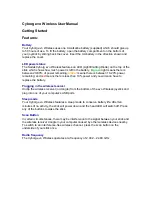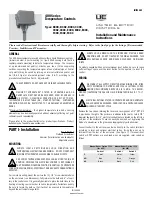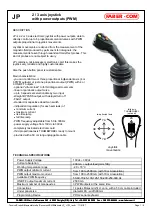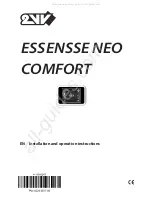
63
Specifications
62
Warranty and Claim Procedure
WARRANTY CLAIM PROCEDURE
1. Before proceeding, please refer to product manual, including troubleshooting section.
2. Contacting your authorized Morningstar distributor or dealer from whom you purchased the unit is
the first step in the warranty process. Local dealers can often address warranty issues quickly.
3. If supplier is unable to address the issue, please contact Morningstar by e-mail (support@morn-
ingstarcorp.com) with:
(A) purchase location -- business or company name
(B) full model and serial numbers (SN is 8-digits on unit bar label)
(C) failure behavior, including LED indications
(D) array configuration, panel Pmax, Voc, Vmp, Isc, and battery voltage; these
specifications are needed to receive assistance.
(E) multi-meter available (for field troubleshooting)
4. After warranty replacement has been approved and new unit(s) received, please return failed
unit(s) using pre-paid shipping label, and follow any product specific instructions if requested by
Morningstar Warranty Dept.
5. If instructed by Morningstar, after warranty replacement shipment has been received, return of
failed unit(s) is required before further warranty replacements can be considered for the original or
future cases.
NOTE: Please do not return units without an RMA or case number. Doing so will increase the
time required to resolve your claim.
8.0
Specifications
Electrical
TS-MPPT-30
TS-MPPT-45
TS-MPPT-60
Nominal System Voltage
All: 12, 24 or 48 Volts dc
Maximum Battery Current
30 Amps
45 Amps
60 Amps
Maximum Solar Input Voltage
All: 150 Volts dc
Battery Operating Voltage Range
All: 8 - 72 Volts dc
Nominal Maximum Input Power*
12 Volt
400 Watts
600 Watts
800 Watts
24 Volt
800 Watts
1200 Watts
1600 Watts
48 Volt
1600 Watts
2400 Watts
3200 Watts
Voltage Accuracy
12 / 24 V: ≤ 0.1% ± 50 mV
48 V: ≤ 0.1% ± 100 mV
Self consumption (tare loss)
All: 1.3 - 2.7 Watts
Transient Surge Protection
All: 4500 Watts / port
* These power levels refer to the maximum wattage each of the TS-MPPTs can process at a certain system voltage. Higher
power arrays can be used without damaging a controller, but array cost-benefits will be reduced at power levels much beyond
the nomina l ra tings.
Battery Charging
Charging algorithm
4 - stage
Charging stages Bulk, Absorption, Float, Equalize
Temperature compensation coefficient
-5 mV / °C / cell (25 °C ref.)
Temperature compensation range
-30 °C to +80 °C
Temperature compensated set-points
Absorption, Float, Equalize, HVD
Charging Set-points:
Settings
Switches
Battery
Type
Absorp.
Stage
Float
Stage
Equalize
Stage
Absorp.
Time
Equalize
Time
Equalize
Timeout
Equalize
Interval
sw: 4-5-6
Volts
Volts
Volts
Minutes Minutes Minutes
Days
off-off-off
1 - Sealed*
14.00
13.70
150
off-off-on
2 - Sealed*
14.15
13.70
14.40
150
60
120
28
off-on-off
3 - Sealed*
14.30
13.70
14.60
150
60
120
28
off-on-on
4 - AGM/Flooded
14.40
13.70
15.10
180
120
180
28
on-off-off
5 - Flooded
14.60
13.50
15.30
180
120
180
28
on-off-on
6 - Flooded
14.70
13.50
15.40
180
180
240
28
on-on-off
7 - L-16
15.40
13.40
16.00
180
180
240
14
on-on-on
8 - Custom
Custom
Custom
Custom
Custom
Custom
Custom
Custom
* “Sealed” battery type includes gel and AGM batteries
See section 4.2 for more information
NOTE:
All charging voltage set-points listed are for 12 Volt systems.
Multiply 2X for 24 Volt systems, 4X for 48 Volt systems.






































